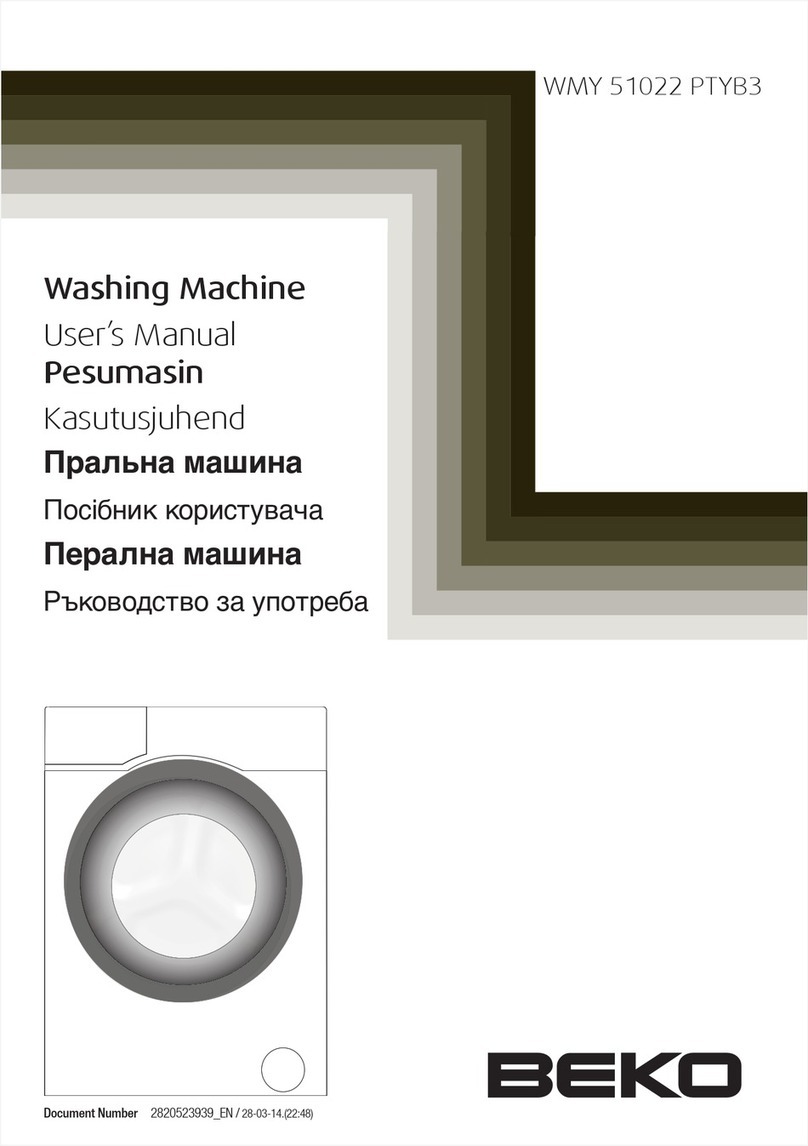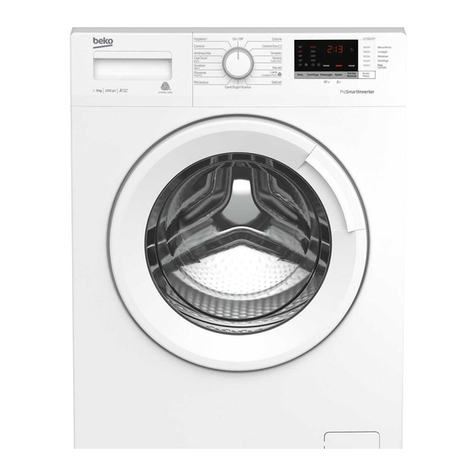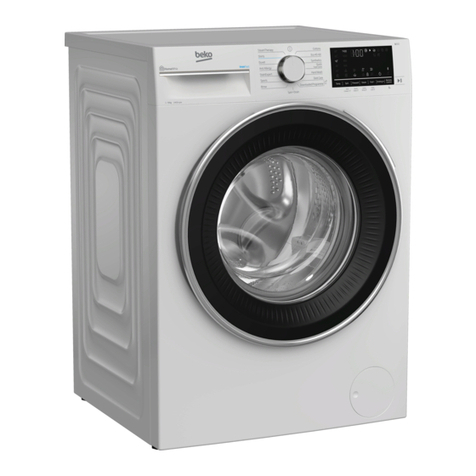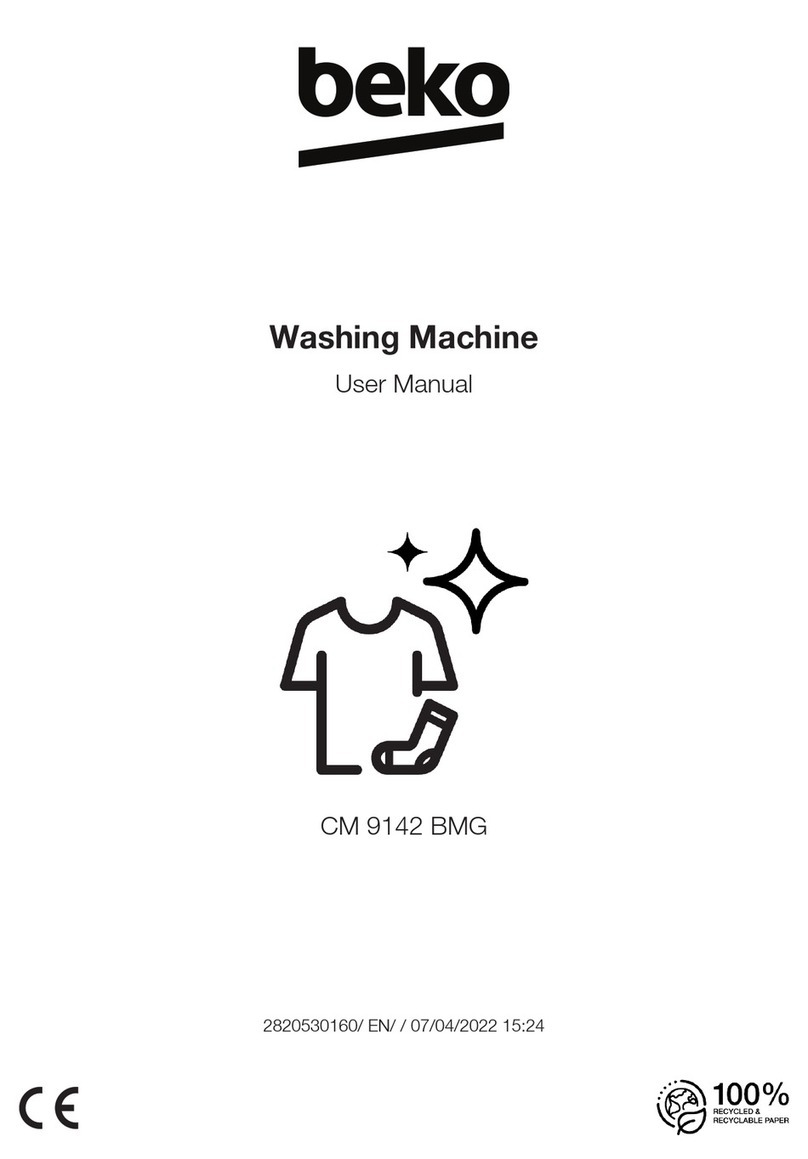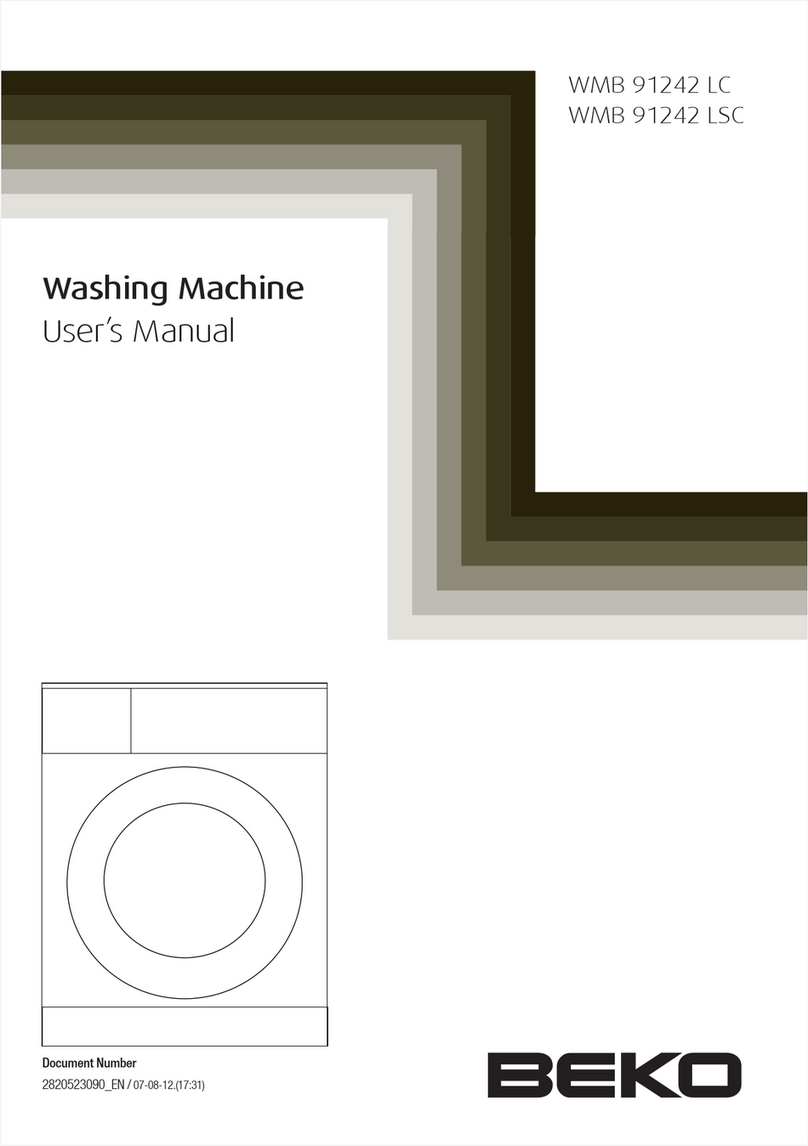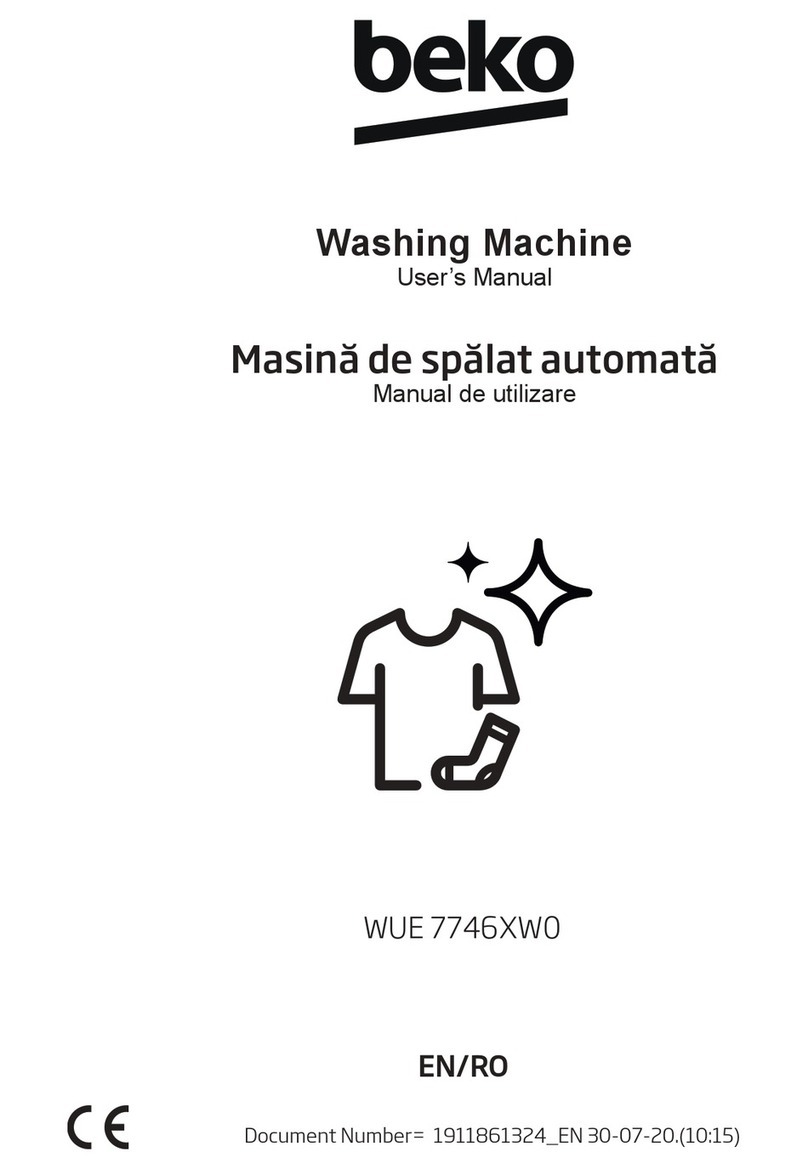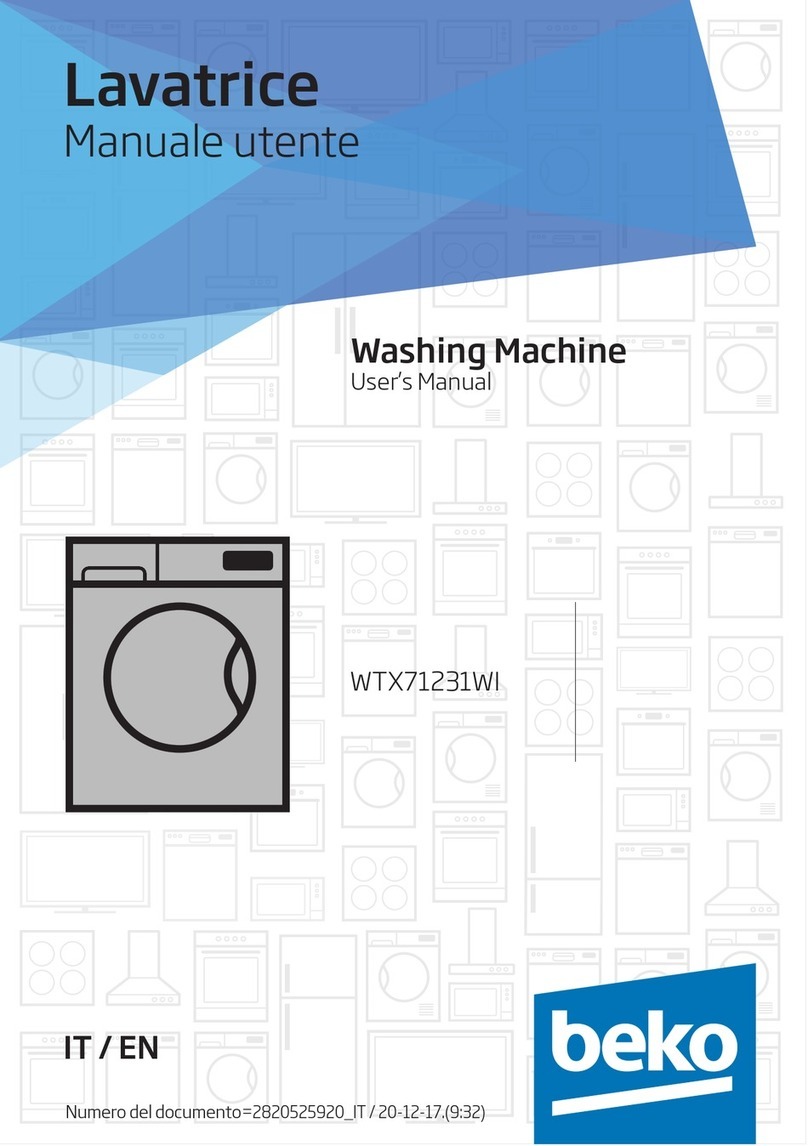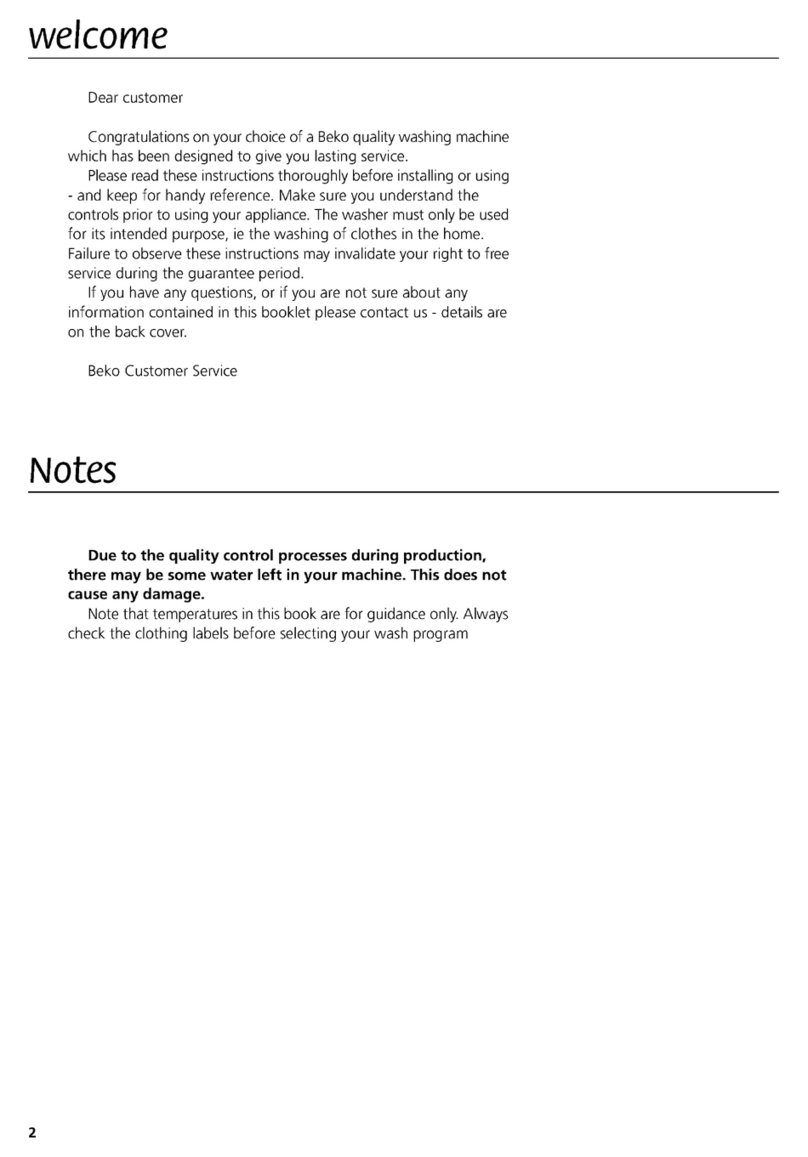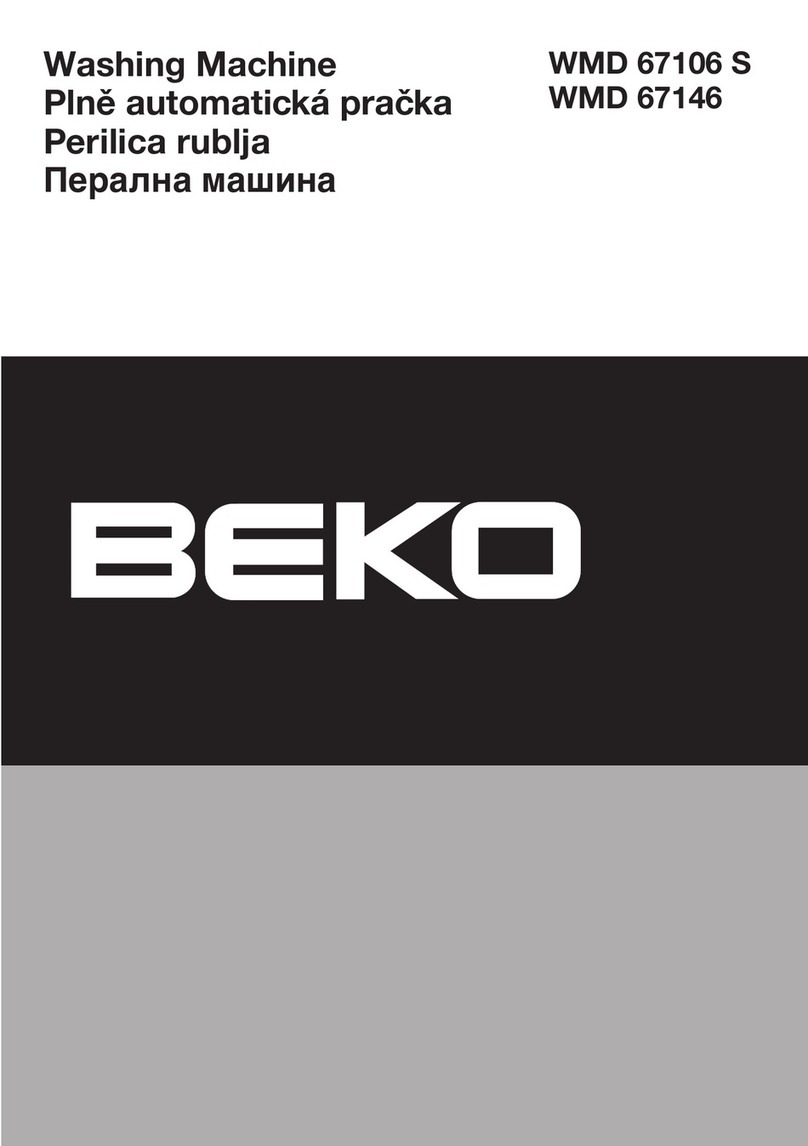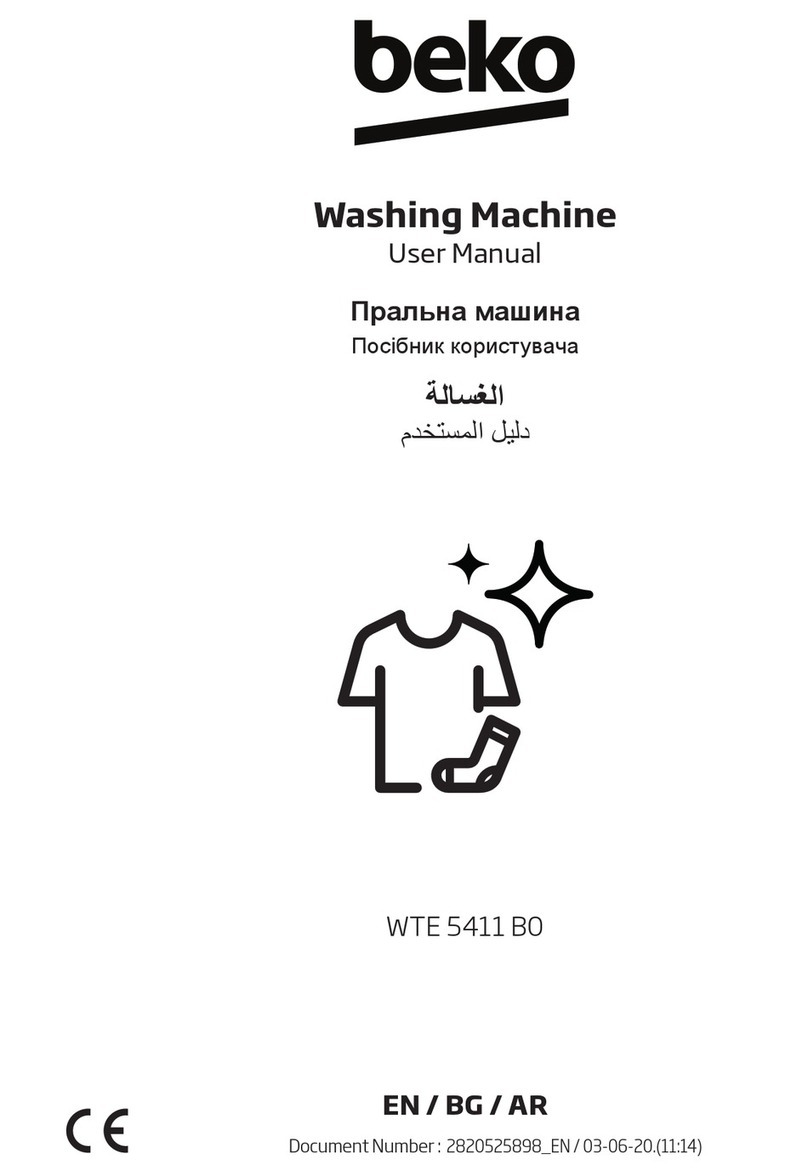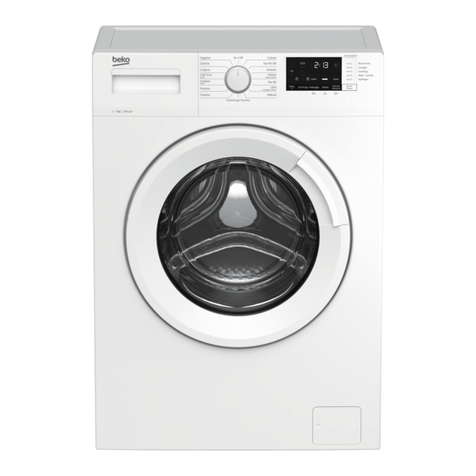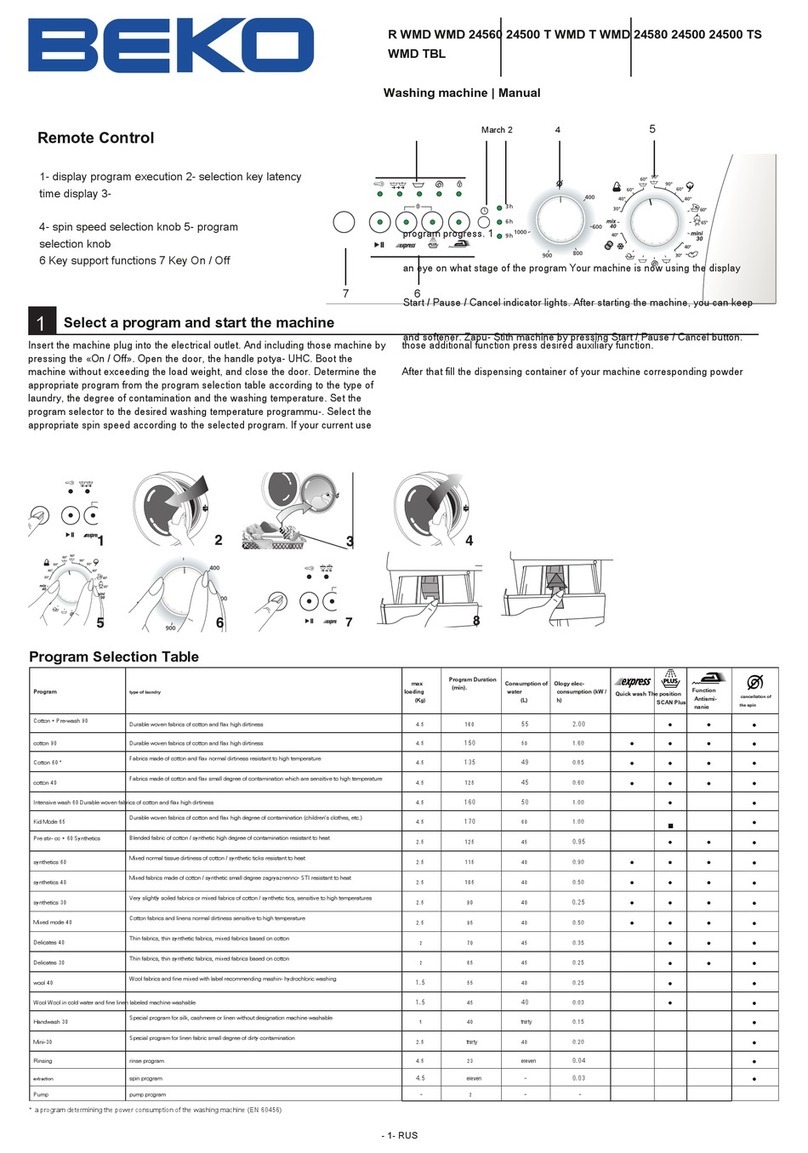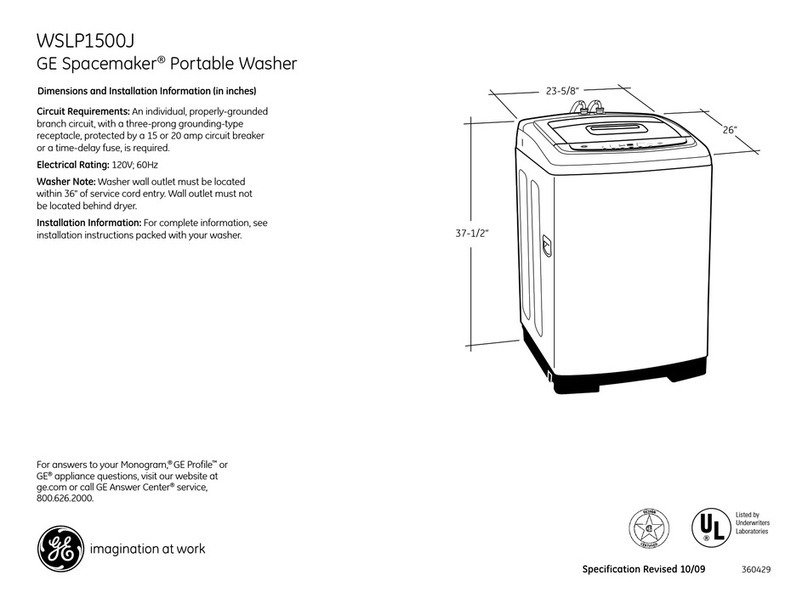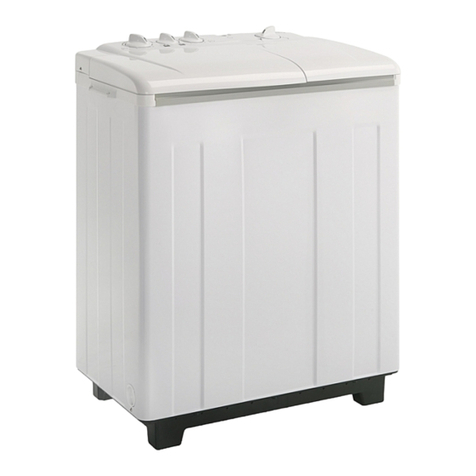EN
6
Please read the following information.
Otherwise, there may be the risk of
personal injury or material damage.
Moreover, any warranty and reliability
commitment will become void.
General Safety
• Never place your machine on a
carpet covered floor. Otherwise,
lack of airflow from below of your
machine may cause electrical
parts to overheat. This may cause
problems with your washing
machine.
• If the power cable or mains plug is
damaged you must call Authorized
Service for repair.
• Check water hoses for wear. Do
not use old/used water inlet hoses.
These may cause stains on your
laundry.
• Fit the drain hose into the discharge
housing securely to prevent any
water leakage and to allow machine
to take in and discharge water as
required. It is very important that the
water intake and drain hoses are not
folded, squeezed, or broken when
the appliance is pushed into place
after it is installed or cleaned.
• Your washing machine is designed
to continue operating in the event
of a power interruption. You cannot
cancel any programme by pressing the
“On/Off button.” Your machine will
not resume its programme when the
power restores. Press the “Start/
Pause/Cancel” button for 3 seconds
to cancel the programme(See,
Cancelling a Programme)
• There may be some water in your
machine when you receive it. This is
from the quality control process and
is normal. It is not harmful to your
machine.
• Some problems you may encounter
may be caused by the software.
Press "Start/Pause/Cancel" button
for 3 seconds to cancel the
programme set in your machine
before calling the authorized service.
First Use
• To prepare your machine for
washing, carry out your first washing
process without loading your
machine and with detergent under
“Cottons 90°C” programme.
• Ensure that the cold and hot water
connections has been made
correctly when installing your
machine. Otherwise, your laundry
may come out hot at the end of the
washing process and may wear out.
• If the current fuse or circuit breaker
is less than 13 Amperes, please
have a qualified electrician install a
13 Ampere fuse or circuit breaker.
• While using with or without a
transformer, do not neglect to have
the grounding installation laid by a
qualified electrician. Our company
shall not be liable for any damages
that may arise when the machine is
used on a line without grounding.
• To make your machine ready for
use, please be sure that the tap
water supply and water drainage
systems are appropriate before
calling the authorized service. If they
are not, call a qualified plumber to
have any necessary arrangements
carried out.
Intended use
• This product has been designed for
home use.
• The appliance may only be used for
washing and rinsing of textiles that
are marked accordingly.
• Only detergents, softeners and
supplements suitable for washing
machines may be used.
• Observe the care instructions
labelled on textile products and
any other instructions given by
2Warnings


